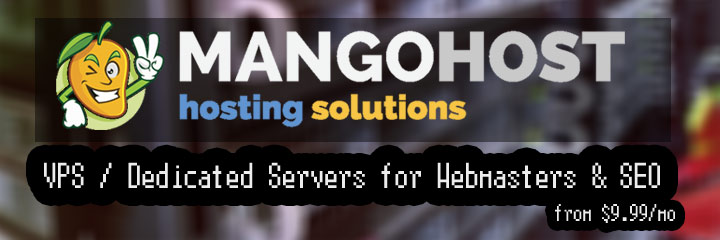
 Get the solution ↓↓↓
Get the solution ↓↓↓
I know it's been asked a million times but I can't find an answer that works properly for me.
When I select an option from my dropdown menu list I want to append the end of my URL which I do correctly. Then I want to display the topic selected from my dropdown list in my input field but the only thing that is showing is the letters I typed. The only time the full topic show is after I refresh the whole page but I don't want to refresh the whole page I just want to refresh the div. Like on reddit. Can anyone help me ? What I've tried below:
create_subtopic.php:
<div class="search_topics">
<input type="text" name="q" placeholder="Choose Topic" id="search_topics_input"
value="<?php echo $topic_toget; ?>" autocomplete="off">
$("#search_topics_input").load("create_subtopic.php");
backend-search.php:
echo "<div class='results_div' onclick='addUrl()'>
function addUrl() {
var url = window.history.pushState( {}, '', '?topic_toget=<?php echo $topic_name; ?>' );
//$( "#search_topics_input" ).load(window.location.href + " .search_topics" );
//$(".search_topics").load(" #search_topics_input > *");
//$("#topic_name").load("#search_topics_input");
$("#search_topics_input").load("backend-search.php");
}
Everything commented out is what I have tried and more.
<button class="btn btn-link" type="button" onclick="updateDiv('1')">Dropdown Item 1</button>
<button class="btn btn-link" type="button" onclick="updateDiv('2')">Dropdown Item 2</button>
<button class="btn btn-link" type="button" onclick="updateDiv('3')">Dropdown Item 3</button>
<select id="div-changer" onchange="updateDiv()">
<option value="1">Dropdown Item 1</option>
<option value="2">Dropdown Item 2</option>
<option value="3">Dropdown Item 3</option>
</select>
function updateDiv(id) {
}
Thats a bit more complicated in the select version:
function updateDiv() {
let id = document.querySelector('#div-changer').options[document.querySelector('#div-changer').selectedIndex].value;
}
Then you do a XMLHttpRequest with the id as a param. You can use it with $_POST['id'] inside php. You could also name everything 'topic' and not use 1, 2, 3 as values but politics, sports and science. The XMLHttpRequest works like this:
var r = new XMLHttpRequest();
r.open("POST", "/include/your-ajax.inc.php", true);
r.setRequestHeader("Content-type", "application/x-www-form-urlencoded");
r.onreadystatechange = function () {
if (r.readyState != 4 || r.status != 200) return;
// process response here
};
r.send('id=' + id);
Inside the onreadystatechange function you use the r.responseText. Its what the server returned. You can for example make a div with a id of content and then you set the innerHTML as the responseText. If thats what you want to do the server has to return propper HTML. If you have for example a simple website, without any querys on the server, you can make 3 documents (the sites) and return them to the client. Inside the onreadystatechange function:
if (r.readyState != 4 || r.status != 200) return;
document.querySelector('#content').innerHTML = r.responseText;
<?php
if (!isset($_POST['id']) || strlen($_POST['id'])) {
echo 'err';
exit();
}
if ($_POST['id'] == '1') {
echo '<h2>Post Number 1</h2><p>Lorem Ipsum...</p>';
exit();
} else if ($_POST['id'] == '2') {
echo '<h2>Post Number 2</h2><p>Lorem Ipsum...</p>';
exit();
} else if ($_POST['id'] == '3') {
echo '<h2>Post Number 3</h2><p>Lorem Ipsum...</p>';
exit();
} else {
echo 'postNotFound';
exit();
}
if (r.responseText == 'err' || r.responseText == 'postNotFound') {
console.log('AJAX error');
return;
}
I didnt test the code. If you have any errors you can ask.
Our community is visited by hundreds of web development professionals every day. Ask your question and get a quick answer for free.
Find the answer in similar questions on our website.
Do you know the answer to this question? Write a quick response to it. With your help, we will make our community stronger.
PHP (from the English Hypertext Preprocessor - hypertext preprocessor) is a scripting programming language for developing web applications. Supported by most hosting providers, it is one of the most popular tools for creating dynamic websites.
The PHP scripting language has gained wide popularity due to its processing speed, simplicity, cross-platform, functionality and distribution of source codes under its own license.
https://www.php.net/
JavaScript is a multi-paradigm language that supports event-driven, functional, and mandatory (including object-oriented and prototype-based) programming types. Originally JavaScript was only used on the client side. JavaScript is now still used as a server-side programming language. To summarize, we can say that JavaScript is the language of the Internet.
https://www.javascript.com/
HTML (English "hyper text markup language" - hypertext markup language) is a special markup language that is used to create sites on the Internet.
Browsers understand html perfectly and can interpret it in an understandable way. In general, any page on the site is html-code, which the browser translates into a user-friendly form. By the way, the code of any page is available to everyone.
https://www.w3.org/html/

Welcome to the Q&A site for web developers. Here you can ask a question about the problem you are facing and get answers from other experts. We have created a user-friendly interface so that you can quickly and free of charge ask a question about a web programming problem. We also invite other experts to join our community and help other members who ask questions. In addition, you can use our search for questions with a solution.
Ask about the real problem you are facing. Describe in detail what you are doing and what you want to achieve.
Our goal is to create a strong community in which everyone will support each other. If you find a question and know the answer to it, help others with your knowledge.